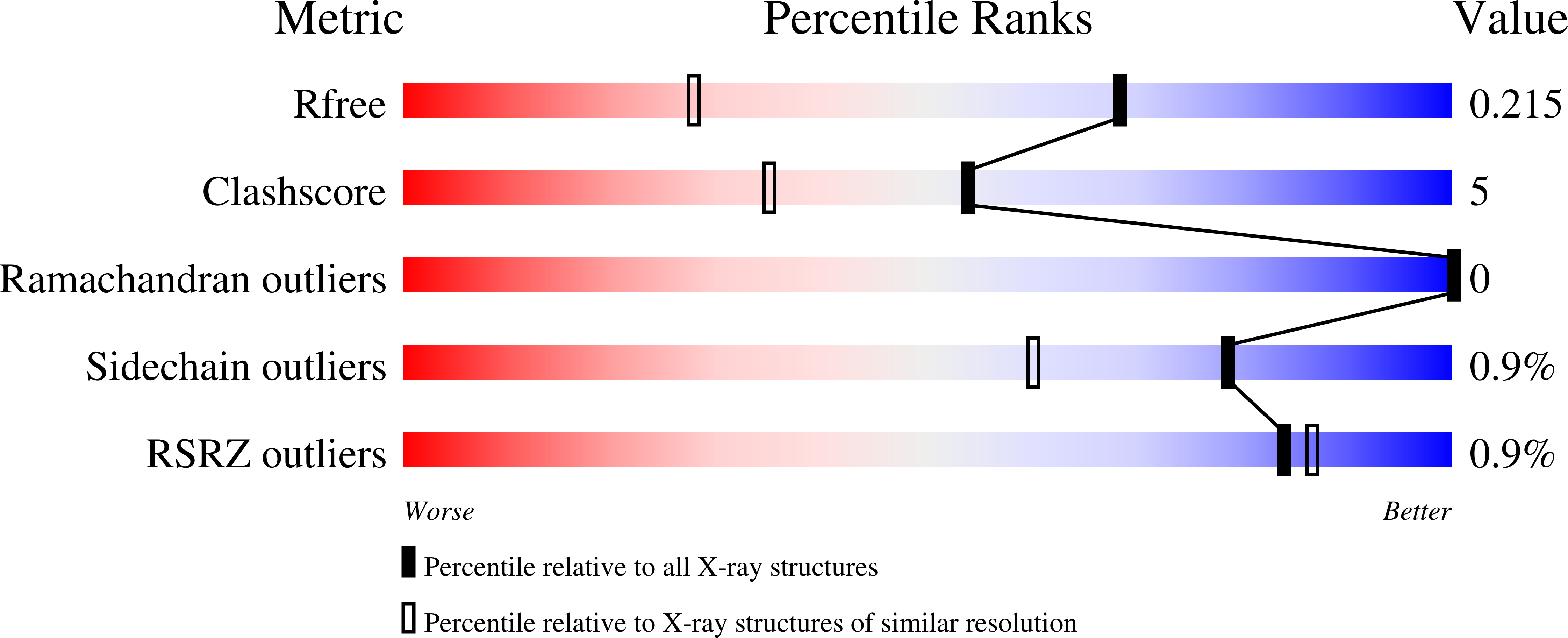The Catalytic Module of Cel7D from Phanerochaete Chrysosporium as a Chiral Selector: Structural Studies of its Complex with the Beta Blocker (R)-Propranolol
Munoz, I.G., Mowbray, S.L., Stahlberg, J.(2003) Acta Crystallogr D Biol Crystallogr 59: 637
- PubMed: 12657782
- DOI: https://doi.org/10.1107/s0907444903001938
- Primary Citation of Related Structures:
1H46 - PubMed Abstract:
Previous investigations have shown that the major cellobiohydrolase of Phanerochaete chrysosporium, Cel7D (CBH 58), can be used to separate the enantiomers of a number of drugs, including adrenergic beta blockers such as propranolol. The structural basis of this enantioselectivity is explored here. A 1.5 A X-ray structure of the catalytic domain of Cel7D in complex with (R)-propranolol showed the ligand bound at the active site in glucosyl-binding subsites -1/+1. The catalytic residue Glu207 makes a strong charge-charge interaction with the secondary amine of (R)-propranolol; this is supported by a second interaction of the amine with the nearby Asp209. The aromatic naphthyl group stacks onto the indole ring of Trp373 (normally the glucosyl-binding platform of subsite +1). Other factors also contribute to good complementarity between the ligand and the substrate-binding cleft of the enzyme. Comparison with the previous structure of a related cellulase, Cel7A from Trichoderma reesei, in complex with (S)-propranolol strongly suggests that these enzymes will bind the (S)-enantiomer in a very similar manner, distinct from their mode of binding to (R)-propranolol. Tighter binding of both enzymes to the (S)-enantiomer is largely explained by two additional hydrogen-bonding interactions with its hydroxyl group. The distinct preference for the (R)-enantiomer is probably a consequence of structural differences near the naphthyl group of the ligand.
Organizational Affiliation:
Department of Molecular Biology, Swedish University of Agricultural Sciences, Uppsala.

















